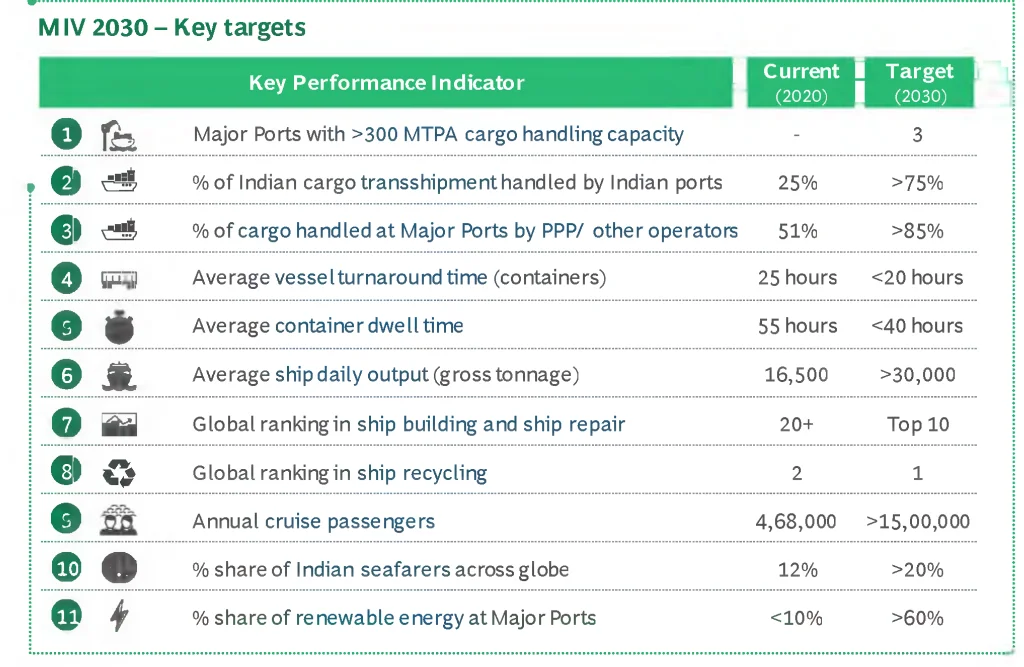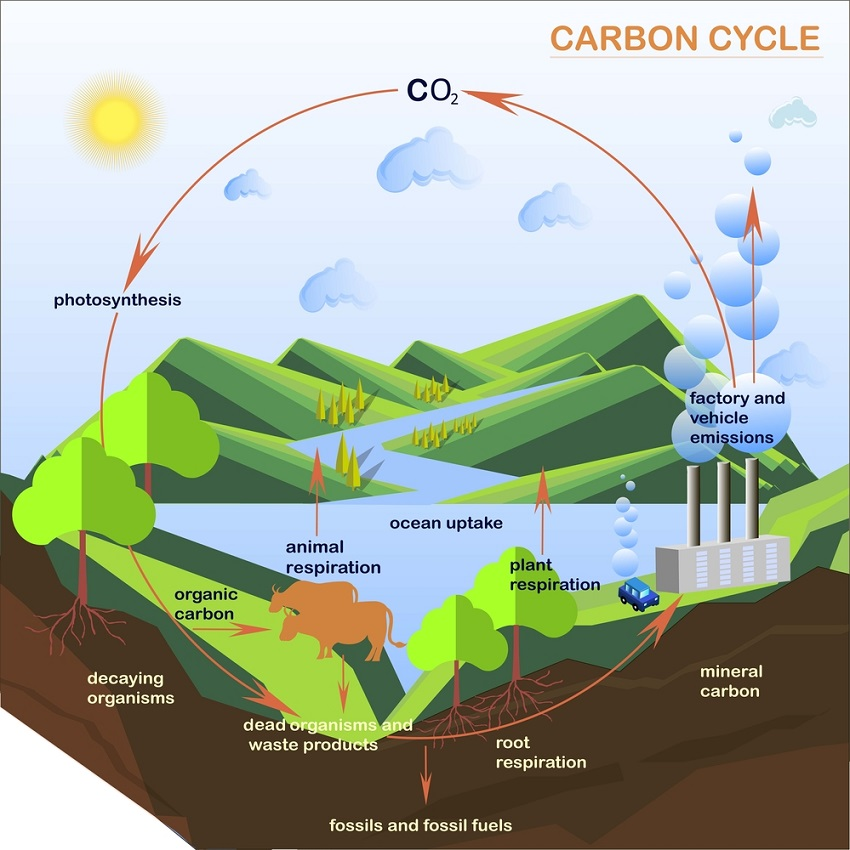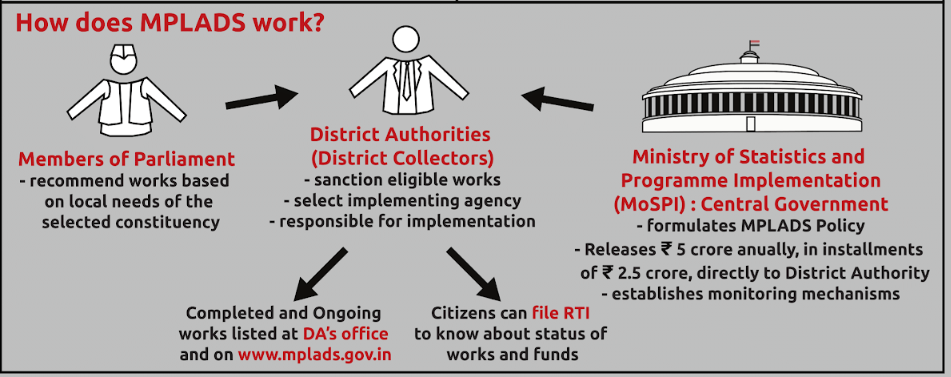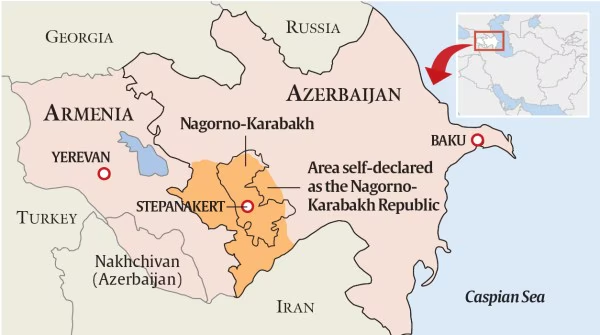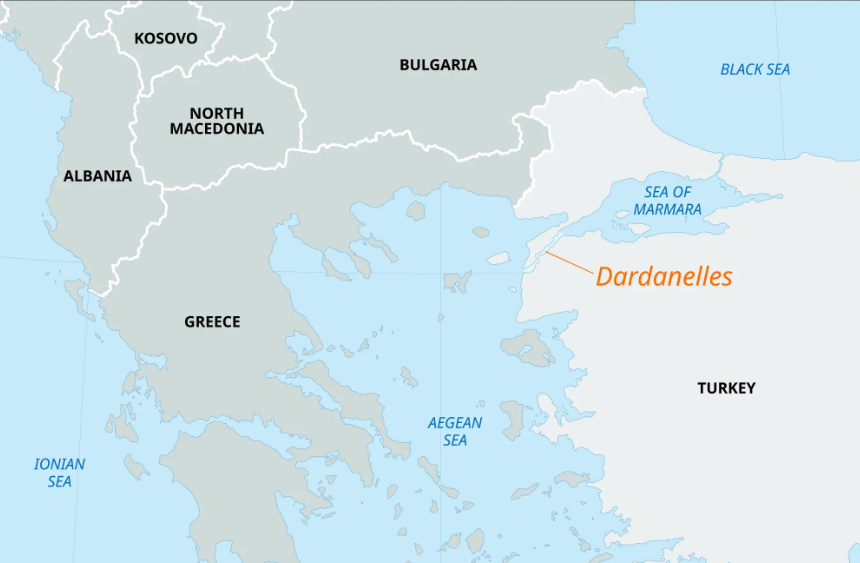Governance
Harnessing AI to Shape India’s IT Leadership
For Prelims: Artificial intelligence, Large Multimodal Models, Non-personal datasets, Generative AI, MSMEs
For Mains: Impact of AI in IT Sector, Opportunities & Challenges of AI for India's Economic Growth, Key Challenges AI Poses to India's Traditional Economy
Why in News?
The Indian IT sector, a USD 280 billion industry employing 5.8 million people, is undergoing a profound shift as Artificial Intelligence transforms service delivery and business operations. This disruption, however has led to moves like TCS halting experienced hiring and cutting 12,000 jobs, sparking concerns over the future workforce and the evolving nature of IT employment.
What are the Key Applications of AI in the IT Sector?
- Productivity, Automation & Workforce Transformation: AI has increased software development productivity through tools like coding assistants and automated code generation (GitHub Copilot by Microsoft).
- AI automates routine IT tasks, reducing errors and boosting efficiency. For instance, UiPath is a leading robotic process automation (RPA) tool that uses AI to automate repetitive, rule-based tasks.
- Developers are evolving into AI supervisors focusing on strategy, ethics, domain-specific logic, and security.
- McKinsey predicts that between 2030 and 2060, generative AI could automate about 50% of global work activities.
- Enhanced Cybersecurity & Threat Detection: AI algorithms detect unusual patterns in real-time for early threat identification and prevention. Machine learning models analyze large datasets to predict attacks, while AI-driven systems respond faster than humans, strengthening IT security.
- Darktrace’s “Enterprise Immune System” uses AI to learn normal network behavior and flags unusual activities, like unexpected file transfers or logins from new locations, as potential threats.
- Improved Data Management: AI automates data collection, storage, and analysis of large, unstructured datasets, enabling sectors like Customer Relationship Management (CRM) to better understand customer behavior and drive business growth.
- Predictive Maintenance: AI analyzes historical data to forecast hardware and software failures, enabling proactive maintenance that reduces downtime and extends the lifespan of IT infrastructure.
- For instance, Company Splunk uses AI to predict system failures from performance data, enabling proactive maintenance.
What are the Key Challenges in the Indian IT Sector’s AI Adoption Journey?
- Skill Gap & Workforce Displacement: Rapid AI adoption has created a significant skill gap, with urgent need to retrain the workforce in AI tools, data science, cybersecurity, and ethical AI.
- Routine coding, maintenance, and back-office roles face automation risks, leading to potential unemployment and wage stagnation in certain segments.
- A World Economic Forum (WEF) report suggests that AI and automation could displace up to 85 million jobs by 2025.
- Regulatory, Ethical & Security Concerns: Ensuring AI systems are transparent, unbiased, and GDPR-compliant adds operational complexity.
- Protecting data privacy and security is vital as AI processes sensitive data, requiring regular ethical audits and strict accountability.
- India’s Digital Personal Data Protection Act, 2023 (DPDP Act) sets a framework for data privacy, but its applicability to large-scale data collection and processing for AI model training remains unclear..
- Integration Challenges with Legacy Systems: Many Indian IT firms operate on outdated legacy infrastructure, making AI integration complex, costly, and time-consuming.
- Migrating to AI-ready systems often requires overhauling existing architectures, which disrupts operations and demands substantial investment.
- Global Competition & Infrastructure Gaps: Competition from Philippines, Vietnam, and Eastern Europe in AI challenges India’s cost advantage.
- Limited high-performance computing, advanced research facilities, and AI infrastructure slow innovation, increase reliance on foreign cloud services, and raise data sovereignty concerns.
- Initiatives like the IndiaAI Mission aim to strengthen infrastructure, yet India continues to lag behind global leaders.
How can India's IT Sector Effectively Harness the Potential of Artificial Intelligence?
- Government-Industry Collaboration & Reskilling: The government should partner with the private sector to build AI computing infrastructure, including high-performance GPU data centers.
- It should facilitate access to large, high-quality datasets for AI training, exemplified by platforms like AIKosh under the IndiaAI Mission.
- Nationwide AI skilling missions in AI, machine learning, and advanced software development are essential to align workforce capabilities with industry needs and global ethical standards.
- Driving AI-Led Product Innovation: Indian IT firms should leverage AI to enhance productivity, moving from traditional service-based models to creating proprietary AI-powered enterprise solutions, cloud services, and cybersecurity products.
- For instance, Ola’s AI venture, Krutrim, is developing its own cloud platform.
- Promoting AI Research through PPP: Encourage PPP for AI research, intellectual property creation, and the development of specialized AI hubs.
- The government should prioritize funding deep-tech AI startups that focus on foundational, high-tech solutions.
- A recent allocation of Rs 10,000 crore under the Fund of Funds scheme marks a significant step in this direction.
- Towards Ethical and Explainable AI: Establish robust AI ethics, data privacy, and bias mitigation standards.
- Government policies should incentivize AI R&D, startup growth, and encourage IT firms to become strategic AI solution partners globally.
- Also, promote the use of explainable AI (XAI) to build trust with clients and regulators.
Conclusion
AI is a catalyst for reinvention, not a threat, for the Indian IT sector. The industry must shift from manpower-intensive outsourcing to knowledge-driven, AI-powered innovation. Firms that embrace change, invest in talent transformation, and position themselves as strategic AI partners will shape India’s technological leadership in the coming years. This vision should be a core theme at the AI Impact Summit, New Delhi, 2026.
|
Drishti Mains Question: Examine the impact of AI on the IT sector. What are the opportunities and challenges, and how can India leverage AI for sustainable growth? |
UPSC Civil Services Examination Previous Year Question (PYQ)
Prelims:
Q. With the present state of development, Artificial Intelligence can effectively do which of the following? (2020)
- Bring down electricity consumption in industrial units
- Create meaningful short stories and songs
- Disease diagnosis
- Text-to-Speech Conversion
- Wireless transmission of electrical energy
Select the correct answer using the code given below:
(a) 1, 2, 3 and 5 only
(b) 1, 3 and 4 only
(c) 2, 4 and 5 only
(d) 1, 2, 3, 4 and 5
Ans: (b)
Mains:
Q. Introduce the concept of Artificial Intelligence (AI). How does Al help clinical diagnosis? Do you perceive any threat to privacy of the individual in the use of AI in healthcare? (2023)


Facts for UPSC Mains
Bills to Modernise India’s Maritime Laws
Why in News?
The Parliament passed Merchant Shipping Bill, 2025, Carriage of Goods by Sea Bill, 2025 & Coastal Shipping Bill, 2025 with the aim to modernise India’s maritime legal framework by replacing outdated colonial-era laws.
What are the Key Provisions of the Recently Passed Maritime Bills?
- Coastal Shipping Bill, 2025:
- It amended the Merchant Shipping Act, 1958, (replacing Part XIV with new norms), modernizing the legal framework aligned with global cabotage norms.
- It aims to raise coastal cargo to 230 million tonnes by 2030 with simpler licensing and foreign vessel regulation.
- It provides for cutting foreign dependence, boosting supply security, jobs, and ease of business.
- It mandates a National Coastal and Inland Shipping Strategic Plan and a National Database to enhance infrastructure planning, transparency, and investor confidence.
- Merchant Shipping Bill, 2025:
- It replaced the outdated Merchant Shipping Act, 1958, aligning India’s maritime laws with International Maritime Organization (IMO) conventions for clarity and ease of compliance.
- It aims to enhance sea safety standards, emergency response, environmental protection, and seafarer welfare, while promoting Indian shipping tonnage and India’s global maritime reputation.
- It authorizes the central government to detain vessels without nationality or legal flag rights in Indian waters, boosting maritime security with a future-ready legal framework supporting India’s economic and trade ambitions.
- Carriage of Goods by Sea Bill, 2025:
- It replaced the Indian Carriage of Goods by Sea Act, 1925 and adopted the internationally accepted Hague-Visby Rules (1924) and its amendments, setting a global standard for maritime trade.
- The Hague-Visby Rules, 1924 govern sea carriage of goods, outlining carrier and shipper rights and liability for cargo loss or damage.
- It regulates Bills of Lading, documents detailing goods’ type, quantity, condition, and destination to enhance transparency and shipping efficiency.
- Empowers the Central Government to issue directions and amend rules on Bills of Lading, promoting ease of business and aligning India’s laws with global standards and trade agreements.
- It replaced the Indian Carriage of Goods by Sea Act, 1925 and adopted the internationally accepted Hague-Visby Rules (1924) and its amendments, setting a global standard for maritime trade.
What is the State of India’s Maritime Sector?
- State of India’s Maritime Sector: India is the 16th largest maritime nation, handling 95% of trade by volume and 70% by value through 12 major and 200+ minor ports on key global shipping routes.
- Capacity and Fleet Growth: Major ports’ cargo-handling capacity grew by 87% (2014–24) to 1,629.86 million tonnes, with 819.22 million tonnes handled in FY24; the fleet comprises 1,530 registered ships.
- Global Rankings: India ranks 38th in the World Bank’s Logistics Performance Index 2023, while being the 3rd largest ship recycler globally with around 30% market share, home to the largest ship-breaking yard at Alang.
- Shipbuilding and Policy Initiatives: Despite lagging in shipbuilding, initiatives like the New Shipbuilding and Repair Policy, along with 100% FDI(under the automatic route for port and harbour construction and maintenance projects), tax holidays, and infrastructure upgrades, aim to boost domestic capacity and have helped raise exports to USD 451 billion in FY23.
Government Initiatives in India’s Maritime Sector
- One Nation-One Port Process (ONOP)
- Sagar Ankalan – Logistics Port Performance Index (LPPI) 2023-24
- Bharat Global Ports Consortium
- MAITRI Platform (Master Application for International Trade and Regulatory Interface)
- National Centre of Excellence in Green Port & Shipping (NCoEGPS)
- Maritime India Vision 2030
- Green Tug Transition Program (GTTP)
|
Read More: Challenges in India’s Maritime Sector |
UPSC Civil Services Examination, Previous Year’s Question (PYQs)
Prelims
Q. Consider the following in respect of Indian Ocean Naval Symposium (IONS): (2017)
- Inaugural IONS was held in India in 2015 under the chairmanship of the Indian Navy.
- IONS is a voluntary initiative that seeks to increase maritime co-operation among navies of the littoral states of the Indian Ocean Region.
Which of the above statements is/are correct?
(a) 1 only
(b) 2 only
(c) Both 1 and 2
(d) Neither 1 nor 2
Ans: (b)
Q. With reference to ‘Indian Ocean Rim Association for Regional Cooperation (IOR-ARC)’, consider the following statements: (2015)
- It was established very recently in response to incidents of piracy and accidents of oil spills.
- It is an alliance meant for maritime security only.
Which of the statements given above is/ are correct?
(a) 1 only
(b) 2 only
(c) Both 1 and 2
(d) Neither 1 nor 2
Ans: (d)
Mains:
Q. Defining blue revolution, explain the problems and strategies for pisciculture development in India. (2018)


Facts for UPSC Mains
Global Best Practises in Flood Risk Management
Why in News?
Climate change is increasing severe floods, making resilience vital. Global best practices such as Tanzania's Msimbazi Basin Project shows how nature-based solutions and modern infrastructure can reduce risks and strengthen climate resilience, offering lessons for India’s flood management strategies.
What are the Leading Global Best Practices in Flood Risk Management?
- Tanzania’s Msimbazi Basin Development Project: A World Bank-funded project in Dar es Salaam aims to reduce flooding by dredging the river, improving drainage, and upgrading infrastructure.
- It also relocates vulnerable residents and converts floodplains into green, climate-resilient areas.
- Netherlands’s Floating Homes: Built with concrete and glass, these flood-resistant homes float during floods, preventing water intrusion. Solar panels and heat exchangers provide continuous power.
- Vienna’s Flood Protection System: In 1969, Vienna built a 21-km flood relief channel parallel to the Danube River.
- This channel absorbs excess floodwater, relieving pressure on the main river, and activates only when needed to protect the city.
- China’s Sponge Cities: The "Sponge Cities" utilize nature-based solutions like permeable surfaces and wetlands to absorb and store rainwater, mimicking Earth's natural water absorption, unlike traditional cities that rapidly drain water via hard surfaces.
- Denmark’s Green Climate Screen: A rainwater system channels water from gutters to mineral wool behind willow panels, absorbing moisture naturally.
- Excess water flows to planters or green spaces, reducing flood risks without costly infrastructure or energy use.
- Texas-Harnessing AI and Satellite Imagery: The University of Arizona and Google's Flood Hub use AI and satellite data to create detailed flood maps and provide 7-day forecasts, improving flood justice and global preparedness.
How Vulnerable is India to Flood Risks?
- Extent of Flood-Prone Area: Out of India’s total 329 million hectares, over 40 million hectares are vulnerable to floods.
- India leads globally with over 158 million slum dwellers in flood-prone areas.
- Also, India experienced 5.4 million internal displacements in 2024 due to floods, storms, and other disasters- the highest number in 12 years.
- Economic Impact: Analysis of the past two decades shows floods cause around 63% of India’s annual economic losses.
- Monsoon patterns have become highly unpredictable, with sudden heavy rainfall causing floods and prolonged dry spells leading to drought.
What are the Key Strategies Adopted for Flood Risk Management in India?
- In India, flood control is primarily a State subject, thus, the responsibility for flood control lies largely with the State Governments, while the Central Government's role is more technical, advisory, and supportive.
- Engineering/Structural Measures:
- Interlinking of Rivers: Under the National Perspective Plan (NPP), interlinking of rivers can help prevent floods by diverting excess water from flood-prone basins, such as the Ganga–Brahmaputra–Meghna, to water-scarce regions.
- This redistributes water flow, reduces peak discharge in rivers during heavy rains, and minimizes the risk of overflowing banks and inundation in vulnerable areas.
- Reservoirs: Help moderate flood intensity by storing water during high discharge periods and releasing it after the peak flow. Their effectiveness depends on capacity and proximity to flood-prone areas.
- Detention Basins: These are natural depressions improved by constructing embankments and regulating water release. Examples include basins in Rajasthan and Bihar.
- Embankments: Prevent floodwaters from spilling over. These are widely used but may have long-term issues like riverbed elevation and erosion. Maintenance is crucial, especially in places like Assam and Bihar.
- Channelization: It involves controlling river courses and improving hydraulic conditions to prevent flooding. Dredging and desilting help rivers carry floodwaters efficiently.
- Diversion of Flood Waters: Diversion channels and spillways help direct floodwaters away from vulnerable areas.
- Examples include the Krishna-Godavari Drainage Scheme and Thottapally Spillway in Kerala.
- Interlinking of Rivers: Under the National Perspective Plan (NPP), interlinking of rivers can help prevent floods by diverting excess water from flood-prone basins, such as the Ganga–Brahmaputra–Meghna, to water-scarce regions.
- Administrative/Non-Structural Measures:
- Flood Forecasting and Warning: The Central Water Commission provides real-time flood forecasts, which help authorities evacuate people and property to safer areas.
- Flood Plain Zoning: Involves designating areas prone to flooding and regulating development in these regions to minimize flood damage.
- Flood Proofing: This involves raising settlements above the flood levels, particularly in areas like Uttar Pradesh, West Bengal, and Assam.
Keywords for Mains
- “River as Resource, Not Risk” : Restoring riverine ecosystems for flood control.
- “Forecast to Forewarn”: Leveraging AI, satellite imagery, and hydrological modeling for early warning systems.
- “Resilience is the New Development” – Growth that survives climate shocks.
- “Communities at the Core” – Inclusive planning with local populations for resilience and early response.
Conclusion
Building flood resilience in India demands the 3Fs- Forecasting, Financing, and Frontline Preparedness to shift from reactive relief to proactive risk reduction.
|
Drishti Mains Question: Assess India’s reliance on structural flood control measures and highlight the importance of integrating nature-based solutions, drawing insights from global best practices. |
UPSC Civil Services Examination, Previous Years Questions (PYQs)
Mains:
Q. The interlinking of rivers can provide viable solutions to the multi-dimensional inter-related problems of droughts, floods, and interrupted navigation. Critically examine. (2020)
Q. Account for the huge flooding of million cities in India including the smart ones like Hyderabad and Pune. Suggest lasting remedial measures. (2020)


Important Facts For Prelims
Orbiting Carbon Observatories (OCOs)
Why in News?
The US has directed NASA to prepare for the early termination of two critical satellites-OCO-2 and OCO-3, which track atmospheric carbon dioxide (CO2) and monitor crop health.
What is Orbiting Carbon Observatories (OCOs)?
- About: The OCOs are a series of NASA’s Earth observation satellites designed to provide crucial data for tracking CO2 sources and sinks, and their impact on global climate systems.
- The first mission, OCO (2009), failed due to a launch vehicle fairing issue.
- However, the subsequent mission, OCO-2 (2014), was successfully launched, measuring atmospheric CO2, identifying its sources and sinks, and tracking crop health through the 'glow' of plant photosynthesis.
- It operates in a sun-synchronous polar orbit to observe any location at the same time of day.
- OCO-3 (2019), installed in the ISS, orbits Earth every 90 minutes, allowing observations of the same location at multiple times of day and providing complementary data to OCO-2.
- Significance: OCO satellites provide global, high-resolution CO2 data, tracking seasonal and regional variations.
- For decades, tropical rainforests were considered the planet's lungs, clearing vast amounts of CO2. However, OCO-2 data revealed that boreal forests (taiga), the coniferous forests in higher latitudes, play a significant role in CO2 absorption.
- Additionally, OCO data showed that natural carbon sinks can transform into carbon sources during events like droughts or deforestation.
- By detecting light from photosynthesis, OCOs map global plant growth, aiding climate mitigation and policy formulation for emission reduction.
About CO2 & Global Carbon Cycle
- About: CO2 is a major greenhouse gas, trapping heat that would otherwise escape into space, and is essential for life and maintaining Earth’s atmospheric balance.
- Sources of CO2: Fossil fuel combustion, respiration, deforestation, and organic decay.
- Sinks of CO2: Vegetation, forests, and oceans, which absorb roughly half of human-produced CO2.
- Global Carbon Cycle: The global carbon cycle is the exchange of carbon between the atmosphere, oceans, land, and fossil fuels, occurring over seconds (photosynthesis) to millennia (fossil fuel formation).
UPSC Civil Services Examination, Previous Year Questions (PYQs)
Prelims
Q1. In the context of mitigating the impending global warming due to anthropogenic emissions of carbon dioxide, which of the following can be the potential sites for carbon sequestration? (2017)
- Abandoned and uneconomic coal seams
- Depleted oil and gas reservoirs
- Subterranean deep saline formations
Select the correct answer using the code given below:
(a) 1 and 2 only
(b) 3 only
(c) 1 and 3 only
(d) 1, 2 and 3
Ans: (d)
Q2. What is/are the advantage/advantages of zero tillage in agriculture? (2020)
- Sowing of wheat is possible without burning the residue of previous crop.
- Without the need for nursery of rice saplings, direct planting of paddy seeds in the wet soil is possible.
- Carbon sequestration in the soil is possible.
Select the correct answer using the code given below:
(a) 1 and 2 only
(b) 2 and 3 only
(c) 3 only
(d) 1, 2 and 3
Ans: (d)
Important Facts For Prelims
MP Local Area Development Scheme
Why in News?
The Minister of State for MoSPI laid out detailed provisions of the Revised Member of Parliament Local Area Development Scheme (MPLADS) Guidelines 2023 in the Parliament, for its effective utilization.
What is the MPLADS Scheme?
- About: MPLAD is a Central Sector Scheme, launched in 1993, which enables Member of Parliament (MPs) to recommend developmental works in their constituencies, focusing on durable community assets based on local needs.
- Rajya Sabha MPs may recommend works in any district(s) of their state of election, while nominated MPs can choose any district(s) in any one state of the country.
- Implementation: The state nodal department supervises the scheme, while district authorities are responsible for project sanction, fund allocation and execution.
- Funding Allocation: Each MP is allocated Rs 5 crore per year since 2011-12, released by the Ministry of Statistics and Program Implementation (MoSPI) to district authorities in two installments of Rs 2.5 crore.
- This fund is non-lapsable and can be carried forward if not utilised in a given year.
- MPs must allocate a minimum of 15% and 7.5% of their funds to create assets for Scheduled Castes (SCs) and Scheduled Tribes (STs), respectively.
- Special Provisions: MPs can spend up to Rs 25 lakh a year outside their constituency or state on projects that promote national unity, and up to Rs 1 crore anywhere in India for relief after severe natural calamities.
- Convergence with Other Schemes: Funds can be converged with Swachh Bharat Mission (SBM), MGNREGS for asset creation or linked to Khelo India for sports infrastructure.
- Eligible Works: Funds can create immovable assets on government land and movable assets for government-owned/controlled or aided institutions.
- Support is allowed on registered social welfare society land (≥3 years), excluding MP/family involvement.
- Funds can also be used for Bar Association buildings on court premises, but not for recurring expenses.
What is the Monitoring Mechanism Under MPLAD Scheme?
|
Agency/Body |
Functions |
|
Ministry of Statistics and Programme Implementation (MoSPI) |
Monitors fund flow, conducts annual reviews, publishes progress reports, and ensures CAG-approved audits. |
|
Central Nodal Agency |
Reviews project implementation and manages audit processes. |
|
State/UT Governments |
Constitute monitoring committees, inspect at least 1% of works annually, and commission third-party audits for high-value projects.
|
|
District Authorities |
Inspect a minimum of 10% of works each year and maintain photographic documentation. |
|
Implementing Agencies |
Conduct site inspections and ensure 100% verification of completed works. |
UPSC Civil Services Examination, Previous Year Question (PYQ)
Prelims
Q. With reference to the funds under the Members of Parliament Local Area Development Scheme (MPLADS), which of the following statements are correct? (2020)
- MPLADS funds must be used to create durable assets like physical infrastructure for health, education, etc.
- A specified portion of each MP’s fund must benefit SC/ST populations.
- MPLADS funds are sanctioned on a yearly basis and the unused funds cannot be carried forward to the next year.
- The district authority must inspect at least 10% of all works under implementation every year.
Select the correct answer using the code given below:
(a) 1 and 2 only
(b) 3 and 4 only
(c) 1, 2 and 3 only
(d) 1, 2 and 4 only
Ans: (d)


Rapid Fire
Armenia - Azerbaijan Peace Agreement
A peace agreement brokered by the US has been signed between Armenia and Azerbaijan, marking a significant step toward resolving the longstanding conflict over Nagorno-Karabakh.
- Peace Deal: Both countries pledged to respect each other's territorial integrity, ending nearly four decades of conflict. The agreement includes mutual relinquishment of territorial claims, a ban on the use of force, and adherence to international law.
- US Role and Strategic Importance: The US gained exclusive rights to develop the 'Trump Route for International Peace and Prosperity' transit corridor in the South Caucasus.
- Nagorno-Karabakh Conflict: Nagorno-Karabakh is a mountainous, landlocked region in the South Caucasus (The Caucasus is a mountain region between the Black and Caspian Seas, spanning Russia, Georgia, Azerbaijan, and Armenia).
- After the Russian Empire’s collapse in 1917, Armenia and Azerbaijan both claimed Nagorno-Karabakh, causing lasting tensions. The 1994 ceasefire left Nagorno-Karabakh under Armenian-backed control (but internationally recognised as part of Azerbaijan).
- Azerbaijan reclaimed control in 2023 after a military offensive, displacing thousands of ethnic Armenians.
- India’s Stance: India supports the peace deal as it sees Armenia and Azerbaijan as part of the International North-South Transport Corridor (INSTC), a key project for India's trade routes connecting India to Russia.
- Additionally, India has a Friendship and Cooperation Treaty with Armenia (1995).
| Read more: Resolving Nagorno-Karabakh Conflict |


Rapid Fire
OMC Compensation & PMUY Subsidy Extension
The Union Cabinet approved budgetary support to public sector Oil Marketing Companies (OMCs) to cover their losses from selling LPG cylinders below international prices in FY 2024-25.
- It also continued the targeted LPG subsidy (through Pratyaksh Hastantarit Labh (PAHAL) DBT scheme) of Rs 300 per 14.2-kg cylinder under the Pradhan Mantri Ujjwala Yojana (PMUY) for up to 9 refills per year for FY 2025-26.
Pradhan Mantri Ujjwala Yojana (PMUY)
- About: PMUY was launched in 2016 by the Ministry of Petroleum and Natural Gas to provide clean cooking fuel ( and removing traditional firewood & coal), specifically LPG, to rural and economically disadvantaged households.
- Ujjwala 2.0: Under Ujjwala 2.0 (Phase 2), special provisions allow migrant families to obtain LPG connections using self-declaration instead of requiring Proof of Address or Ration Cards.
- Eligibility: Women aged 18+ from households without existing LPG connections, belonging to categories such as SC/ST, PM Awas Gramin, Most Backward Classes, AAY, tribal groups, forest dwellers, island residents, SECC-listed households, or other poor families.
- Key Benefits: Beneficiary households receive subsidy for cooking gas cylinders.
- This has led to improved women's health by reducing indoor air pollution, decreased women’s drudgery, environmental protection through less deforestation, and enhanced nutrition due to easier cooking with clean fuel.
- Achievements: As of July 2025, over 10.33 crore PMUY connections have been issued nationwide.
- The average per capita LPG consumption among PMUY beneficiaries has risen around 49% between 2019 & 2024 reflecting increased LPG usage.
| Read More: LPG Subsidy Initiatives in India |


Place In News
Dardanelles Strait
The Dardanelles Strait has been temporarily closed to maritime traffic as forest fires ravage north-western Turkey.
- The Dardanelles Strait is a vital narrow waterway in northwestern Turkey. It separates the Gallipoli Peninsula in Europe from the mainland of Asia Minor.
- It connects the Aegean Sea to the Sea of Marmara, allowing for passage to the Black Sea via the Bosporus Strait.
- The major ports located on the Dardanelles Strait are Gallipoli, Eceabat, and Çanakkale, all situated within Turkey.
- Historical Significance: The Dardanelles Strait has witnessed significant events, including the Persian invasion (480 BCE), and World War I’s Gallipoli Campaign.
| Read more: Battle of Gallipoli |

